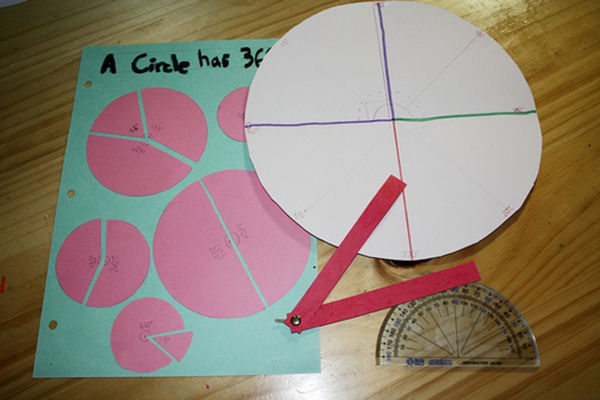Create a homemade math tool
Make a homemade abacus using beads and straws to practice counting, place value, addition, and subtraction with hands-on visual learning.



Step-by-step guide to make a homemade abacus
Adding & Subtracting! | Mini Math Movies | Scratch Garden
Step 1
Lay the piece of cardboard flat on a table to make the base for your abacus.
Step 2
Use the marker to draw four evenly spaced horizontal lines across the cardboard where the straws will sit.
Step 3
Cut four straws to match the width of the cardboard leaving about 1 cm extra on each end.
Step 4
Slide beads onto each straw until each straw has ten beads and use different colors for different place values if you like.
Step 5
Place the first beaded straw on the top drawn line and tape both ends down to secure it to the cardboard.
Step 6
Repeat placing and taping each remaining beaded straw on the other drawn lines until all four straws are fixed.
Step 7
Label the straws from right to left as Ones Tens Hundreds Thousands with the marker.
Step 8
Slide all the beads to one side to reset your abacus before you begin practicing.
Step 9
Count on the abacus by sliding one bead at a time on the Ones rod and saying each number out loud up to ten.
Step 10
Practice addition by sliding three beads then four beads on the Ones rod and counting the total beads now moved.
Step 11
Practice subtraction by sliding eight beads then moving back five beads and counting how many remain.
Step 12
Share your finished homemade abacus on DIY.org
Final steps
You're almost there! Complete all the steps, bring your creation to life, post it, and conquer the challenge!


Help!?
What can we use instead of straws or beads if they're hard to find?
Use wooden skewers, pencils, or pipe cleaners cut to the cardboard width in place of straws, and substitute beads with pasta shells, buttons, or pom-poms threaded onto the straws before taping.
My beads won't slide or the straws keep popping loose—how can I fix that?
If beads stick after you cut the straws, smooth or trim the jagged ends and secure each straw by using stronger tape, staples, or a dab of hot glue when you tape both ends down to the cardboard.
How can I adapt this abacus activity for younger or older children?
For younger kids use 3–5 larger beads per straw and label rods with pictures instead of words, and for older kids add extra straws for higher place values and use color-coded beads to practice multi-digit addition like in the Practice addition step.
What are easy ways to enhance or personalize our homemade abacus?
Decorate the cardboard, color-code beads for Ones, Tens, Hundreds, Thousands as suggested in step 4, glue a frame for durability, and create timed counting or addition games before sharing it on DIY.org.
Watch videos on how to make a homemade abacus
Easy math model for addition & subtraction/math tlm/diy addition subtraction model
Facts about math manipulatives for kids
♻️ A DIY abacus made from straws and beads is cheap, lightweight, and a great way to upcycle craft materials.
🎯 A Japanese soroban typically uses one 'heaven' bead above and four 'earth' beads below on each rod — perfect for teaching units, tens, hundreds.
🔢 Hands-on math tools like an abacus help kids understand place value by making numbers visible and moveable.
🧠 Regular abacus practice can build 'mental abacus' skills, where learners visualize beads to do fast mental calculations.
🧮 The abacus dates back over 2,500 years and was one of the world's earliest calculating tools.
How do I make and use a homemade abacus with beads and straws to practice counting and simple arithmetic?
What materials do I need to build a DIY abacus using beads and straws?
What ages is a homemade bead-and-straw abacus suitable for?
What are the benefits of using a homemade abacus, and are there safe variations or tips?


One subscription, many ways to play and learn.
Only $6.99 after trial. No credit card required


